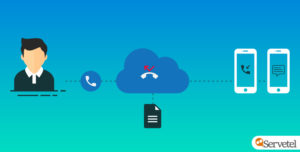2020 stands as an unforgettable year in many aspects, bringing the world to a standstill. Lockdowns were initiated, while offices, malls, cafés, theatres, places of worship, and nearly every public place shut down.
It is evident that COVID-19 has had personal as well as professional consequences worldwide. However, these disruptions have been more profound in a densely populated developing country like ours. Mass exodus of labourers and job cuts across industries have jolted the entire nation. To make matters worse, 2020 has also repeatedly brought us face-to-face with nature’s wrath. Ample adversity was caused by cyclones Nisarg and Amphan, earthquakes in several parts of the country, as well as the recent floods across the subcontinent.
However, sometimes you need to look at the world through rose-tinted glasses. 2020 is also the year we’ve all come together as one. The government, civil societies, businesses and individuals—all joined hands to combat the newfound uncertainties. We quickly understood that adopting robust infrastructure and the latest technology is the only viable solution to survive this chaos. Cloud technology, particularly cloud telephony, has emerged as the front-runner!
In this article, we will explore the various ways cloud telephony has aided government and private efforts to combat the challenges of the year. We will also briefly discuss the benefits of cloud telephony, and why it is the way ahead. However, before we delve into this topic, let’s understand the technology at hand.
What is Cloud Telephony?
Simply put, cloud telephony is an upgrade from traditional telephone systems like on-premise PBX (public branch exchange). It eliminates the need for complex wiring, landlines, infrastructure, etc. Here, the phone system is moved to the cloud, i.e, calls are facilitated via the Internet. This allows cross-device integration while enabling remote work—the biggest incentive for companies to switch to this technology.
Now that we have a brief understanding of cloud telephony, let’s see how this technology has acted as an enabler through the turmoil:
1. COVID Helplines
As soon as the lockdown was announced, the government was quick in releasing 24×7 helpline numbers. These numbers helped mitigate the immediate chaos and panic caused by the sudden disruption. Launching such state and nationwide toll free numbers also ensured that people received correct information regarding the pandemic.
Since the virus spreads easily through human-to-human contact, it becomes important to reach out to remote areas with accessible technology. Cloud telephony services like toll free numbers help in this regard by allowing people to make calls free of cost. The technology was also used by numerous NGOs and private organisations volunteering to aid the government effort. Many of these organisations worked to supply food packets to the most deprived localities. Such efforts rely on quality communication via robust telephony infrastructure promised by the cloud.
2. Pre-call COVID Information Broadcasting (outbound IVR)
Remember those COVID advisory recordings we heard before every call? Though they could have seemed annoying in the face of important calls, they served the purpose of spreading critical information to the masses. Given the abrupt inception and rapid transmission of the virus, this technology definitely helped save lives. It can be argued that the geographic and economic structure of our country could handle information dissemination only with such pocket-friendly communication models in place.
3. Combating Natural Disasters like Cyclones Amphan and Nisarga
Cyclones cause major loss of life and property. It is only through proactive measures like early warnings and effective communication to the masses that the said loss can be mitigated. For this, Central and State governments have yet again relied on the tried and tested cloud telephony solutions.
Similar to the COVID response, governments quickly released toll free numbers for people’s benefit. This service helped them identify regions and individuals in need of immediate rescue efforts, while giving timely updates about ongoing operations, cyclone tracking and local camp locations.
Natural calamities can often disrupt local communication. However, cloud services can save the day by setting up virtual numbers in minutes. Adding a simple IVR to the call flow allows callers to quickly find the type of assistance they require, while giving the administration an option to save details and record crucial calls for complete comprehension.
Furthermore, tools like bulk SMSes and voice broadcasting enable governments to swiftly inform citizens about impending threats. They can give live updates and early warnings even in Internet-deprived locations. The added benefit is that one can identify high-risk zones and accordingly target broadcasting to those residents.
4. Telemedicine
Immediate assistance and rescue operations are merely the first step in cases of natural disasters. The next challenge lies in providing rehabilitation and continued support. For instance, people stranded in remote areas after a flood require medical assistance more pressingly than ever. Cloud telephony can be used by medical organisations to facilitate virtual care.
Using toll free numbers integrated with IVR, individuals can easily interact with doctors on call and get instant support. These cloud telephony services have benefitted numerous people recently and have rather proved to be vital. Noting the significance of these solutions, the Government of India recently released telemedicine healthcare guidelines, giving a boost to the telehealth sector.
Why has Cloud Telephony Emerged as a Powerful Tool to Mitigate Natural Disasters?
We have seen how different cloud telephony solutions are being used in various parts of the country to help those in need. Here are just a few of its benefits that prove its superiority to traditional telephony systems.
(1) Robust Infrastructure – In case of a natural disaster, local telephone lines and contact centres can be destroyed, leaving the masses in turmoil. Cloud telephony helps alleviate this problem with the help of virtual numbers. Now, one would not encounter dead telephone lines and can be ensured of continued support.
(2) Handle High Call Traffic – Unlike traditional telephony systems, cloud-based telephony systems can be readily scaled to handle high call traffic. Therefore, people requiring immediate assistance would not have to face jammed lines.
(3) Local Languages – It is imperative that crucial messages reach every individual. Given the linguistic diversity of the country, broadcasting translated messages in vernacular languages can ensure maximum efficiency.
Conclusion
2020 has truly tested our spirit as a country, and more so as global citizens. It has helped us realise the importance of effective collaboration and the power of concentrated efforts. Through this turmoil, cloud telephony has proved to be the backbone of communication infrastructure, necessary to implement team efforts to combat natural disasters. Through these months, cloud telephony services have helped thousands of citizens and saved them from a complete information blackout. This is a testament to the immense power of this simple technology.
To know more about cloud telephony and its implications in the business world, read our blogs or try the technology first hand by giving a call to our sales team at 1800-120-4132.

















